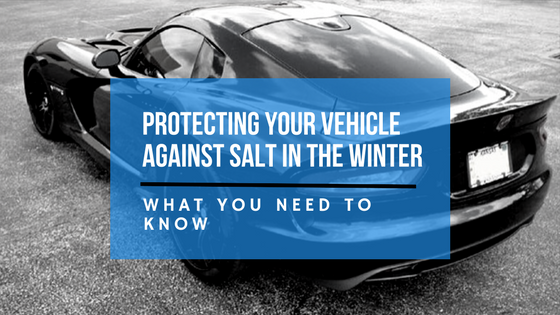
Protecting your Vehicle Against Salt in the Winter
We might be in the middle of a milder winter here in KC, but it’s still February and it’s still winter in Kansas City. That means that mild or not, we’re not out of the danger zone for snow and ice yet. And even though this year’s big weather event was the Ice-Storm-That-Never-Was, the transportation agencies still pre-salted the roads in anticipation of a freeze.
This is good news for our general safety, bad news for our cars.
Why we use salt to treat winter roads
Salt lowers water’s freezing point, so just like the chemical reaction between salt and ice creates the creamy texture of ice cream, it also helps any ice that’s formed on roads and sidewalks to melt — even when the air temperature is still well below freezing.
In the Kansas City area, it’s common to traverse both Missouri and Kansas and each state handles their road treatment a bit differently. In Kansas, KSDOT frequently mixes salt brine — a liquid chemical form that can’t be blown off the road by passing vehicles — with road salt using a technique known as pre-wetting that jumpstarts the melting process. MODOT typically uses a mixture of 80% salt brine and 20% beet juice; the beet juice helps the salt brine work at lower temperatures, and is added at temperatures between 25 and 5 degrees while calcium chloride is added to the mix between 5 and -10 degrees. Beet juice has also been proven to help lessen the corrosive properties of the salt.
But beet juice or not, all that salt still isn’t good for your car — and salt brine, while economic and effective, is even worse than plain rock salt. You wear gloves, coats, hats, and all sorts of protective gear to shield yourself from the winter weather. Why not protect your car too?
Preventing salt damage to your car
The parts of your vehicle most at risk for salt damage are all important elements of your car: the body, the brakes, and the undercarriage, which includes your exhaust system, muffler, subframe, and coil springs. So what can you do before winter hits to prevent damage?
- Take a cue from MODOT and KSDOT and pretreat your car with a good wash and waxing — you can even pretreat your undercarriage with an oil-based treatment
- Apply a spray-on protectant to wheels and wheel wells
- If you didn’t already need a reason to, avoid driving through heavy snow and salty puddles of slush or ice
- Avoid driving behind a plow — not only is it annoying to get stuck behind one, but you’re far more likely to get sprayed with salt
- Don’t forget about the inside of your car and add rubber mats to your floors, especially on the driver’s side
- A coat of XPEL Paint Protection covers the painted surfaces of your car in a protective, self-healing plastic coating that will help prevent corrosion and rust from forming on your car body
Removing salt damage from your car
If you slacked on pre-wintering your car, don’t worry about it — some salt damage is inevitable. The good news is, there are simple ways to remove that damage and prevent any permanent damage.
- Wash your car every 10 days in the winter, if possible. The best opportunities to wash your car are on days when the temperature is above 40 degrees, in the middle of the day when there’s still ample time for it to dry before nighttime temperature drops
- Give special attention to the undercarriage and wheels during washes, either through an add-on at the car wash or by using a high-pressure sprayer at home
- If washing at home, use a high-pressure hose and add baking soda to the wash solution to help dissolve dried salt
- Dry your car thoroughly, and then re-apply wax
- Pay attention to your brake’s red warning light. As soon as you see it come on, drive your car to a trusted repair shop to prevent or fix any permanent and dangerous damage
- When spring finally arrives (and we all breathe a sigh of relief) give your car a thorough detailing to remove all the winter gunk that’s accumulated. That includes a wash, cleaning off stuck-on residue, and application of a compound and waxing.
